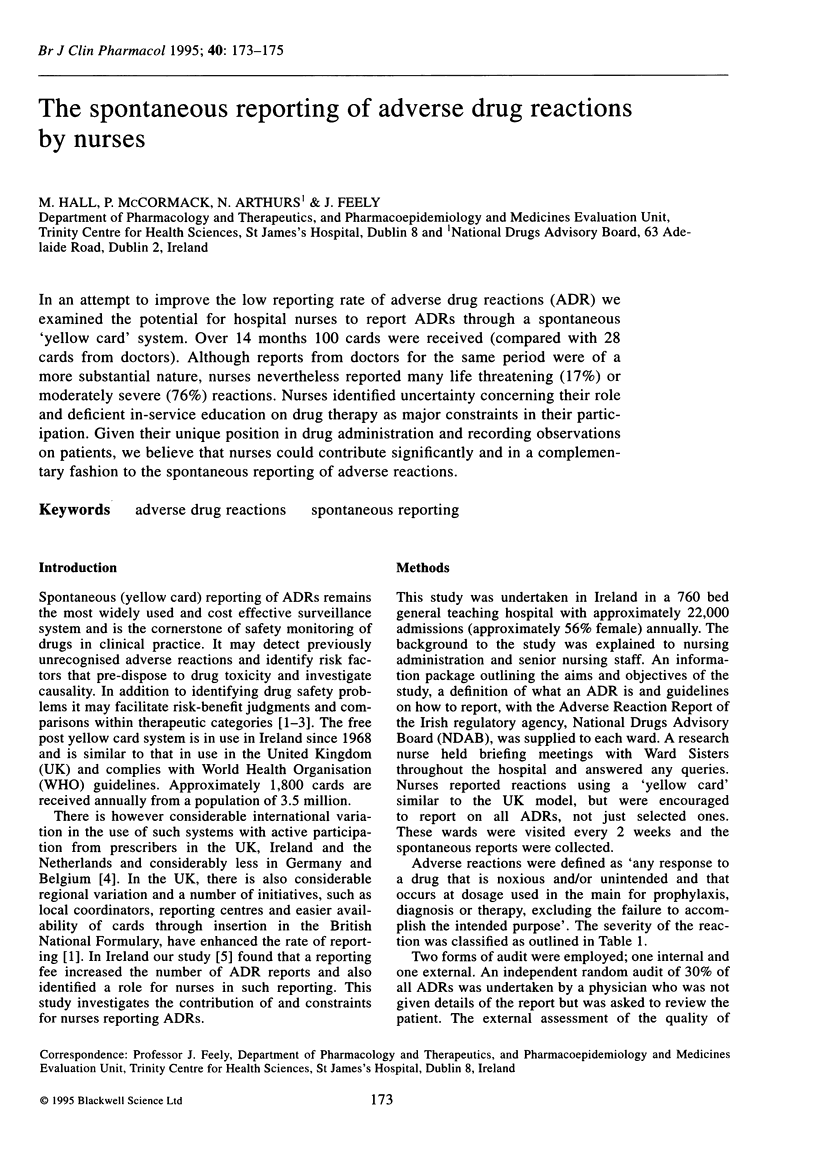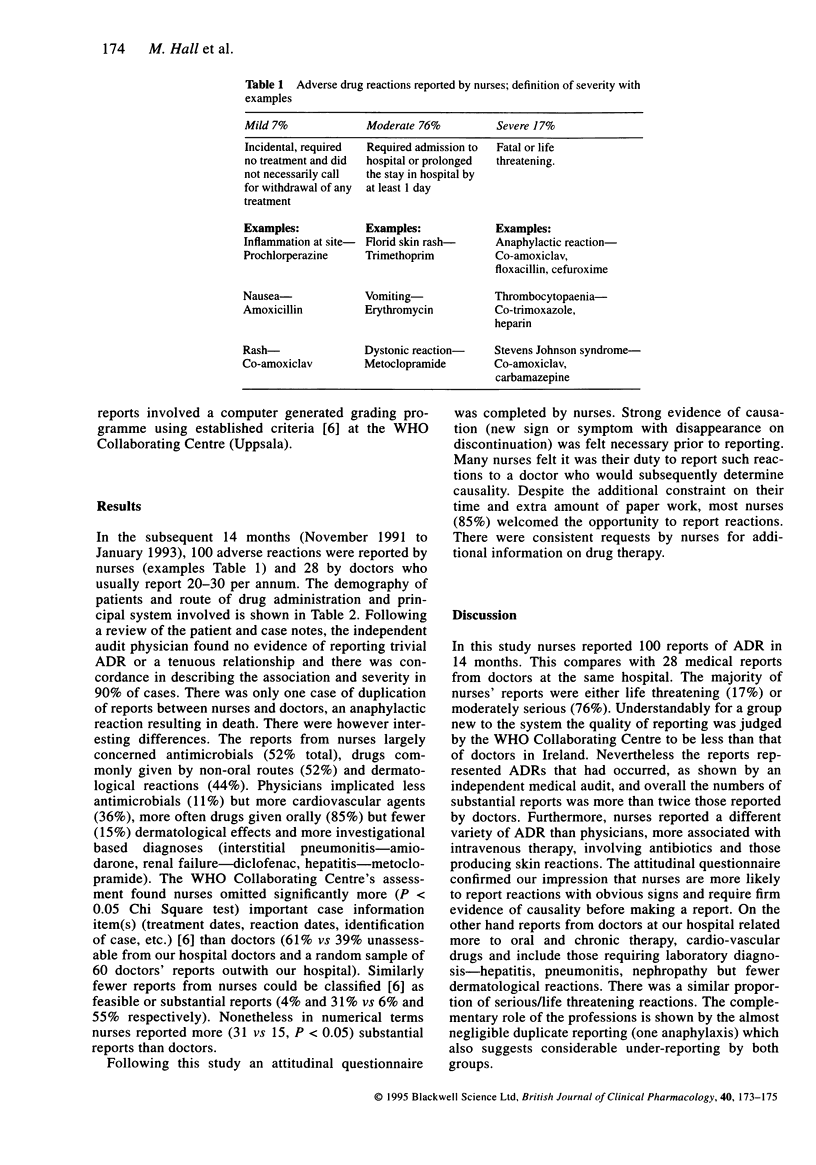Abstract
In an attempt to improve the low reporting rate of adverse drug reactions (ADR) we examined the potential for hospital nurses to report ADRs through a spontaneous 'yellow card' system. Over 14 months 100 cards were received (compared with 28 cards from doctors). Although reports from doctors for the same period were of a more substantial nature, nurses nevertheless reported many life threatening (17%) or moderately severe (76%) reactions. Nurses identified uncertainty concerning their role and deficient in-service education on drug therapy as major constraints in their participation. Given their unique position in drug administration and recording observations on patients, we believe that nurses could contribute significantly and in a complementary fashion to the spontaneous reporting of adverse reactions.
Full text
PDF


Selected References
These references are in PubMed. This may not be the complete list of references from this article.
- Dukes M. N. The importance of adverse reactions in drug regulation. Drug Saf. 1990 Jan-Feb;5(1):3–6. doi: 10.2165/00002018-199005010-00002. [DOI] [PubMed] [Google Scholar]
- Edwards I. R., Lindquist M., Wiholm B. E., Napke E. Quality criteria for early signals of possible adverse drug reactions. Lancet. 1990 Jul 21;336(8708):156–158. doi: 10.1016/0140-6736(90)91669-2. [DOI] [PubMed] [Google Scholar]
- Feely J., Moriarty S., O'Connor P. Stimulating reporting of adverse drug reactions by using a fee. BMJ. 1990 Jan 6;300(6716):22–23. doi: 10.1136/bmj.300.6716.22. [DOI] [PMC free article] [PubMed] [Google Scholar]
- Rawlins M. D. Pharmacovigilance: paradise lost, regained or postponed? The William Withering Lecture 1994. J R Coll Physicians Lond. 1995 Jan-Feb;29(1):41–49. [PMC free article] [PubMed] [Google Scholar]
- Rawlins M. D. Spontaneous reporting of adverse drug reactions. I: the data. Br J Clin Pharmacol. 1988 Jul;26(1):1–5. doi: 10.1111/j.1365-2125.1988.tb03356.x. [DOI] [PMC free article] [PubMed] [Google Scholar]


